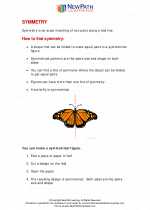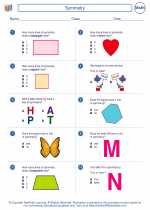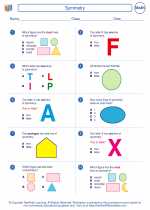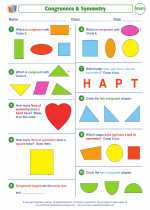Math Problems
Math problems are questions or exercises that require the application of mathematical concepts to find a solution. These problems can cover a wide range of mathematical topics, including arithmetic, algebra, geometry, and more.
Types of Math Problems
Math problems can be classified into various types:
- Arithmetic Problems: These involve basic operations such as addition, subtraction, multiplication, and division.
- Algebraic Problems: These require the use of variables and equations to solve for unknown values.
- Geometry Problems: These involve the properties and measurements of shapes, angles, and solids.
- Word Problems: These are real-life scenarios presented as mathematical questions that need to be solved using mathematical operations.
Strategies for Solving Math Problems
When tackling math problems, it's helpful to use various strategies:
- Understand the Problem: Read the problem carefully to grasp what is being asked and what information is provided.
- Identify the Mathematical Concepts: Determine which mathematical concepts and operations are relevant to the problem.
- Plan a Solution: Devise a plan or strategy for solving the problem, which may involve using diagrams, tables, or equations.
- Execute the Plan: Implement the chosen strategy to solve the problem step by step, showing all the necessary calculations and reasoning.
- Check the Solution: Verify the solution by checking if it satisfies the conditions of the problem and if the answer makes sense in the given context.
Practice and Resources
Improving problem-solving skills in math requires practice and access to helpful resources:
- Practice Problems: Solve a variety of math problems regularly to build proficiency and confidence.
- Online Tutorials and Videos: Utilize online platforms that offer tutorials, videos, and interactive exercises to enhance understanding of mathematical concepts and problem-solving techniques.
- Math Workbooks and Guides: Use math workbooks, textbooks, and study guides that provide structured practice and explanations of different problem types.
By understanding the types of math problems, employing effective problem-solving strategies, and engaging in consistent practice, students can develop strong mathematical skills and excel in solving a wide range of math problems.
.◂Math Worksheets and Study Guides Third Grade. Symmetry
Study Guide Symmetry
Symmetry  Worksheet/Answer key
Worksheet/Answer key Symmetry
Symmetry  Worksheet/Answer key
Worksheet/Answer key Symmetry
Symmetry  Worksheet/Answer key
Worksheet/Answer key Symmetry
Symmetry  Worksheet/Answer key
Worksheet/Answer key Congruence and Symmetry
Congruence and Symmetry 

 Worksheet/Answer key
Worksheet/Answer key
 Worksheet/Answer key
Worksheet/Answer key
 Worksheet/Answer key
Worksheet/Answer key
 Worksheet/Answer key
Worksheet/Answer key

The resources above cover the following skills:
Geometry (NCTM)
Analyze characteristics and properties of two- and three-dimensional geometric shapes and develop mathematical arguments about geometric relationships.
Identify, compare, and analyze attributes of two- and three-dimensional shapes and develop vocabulary to describe the attributes.
Apply transformations and use symmetry to analyze mathematical situations.
Identify and describe line and rotational symmetry in two- and three-dimensional shapes and designs.